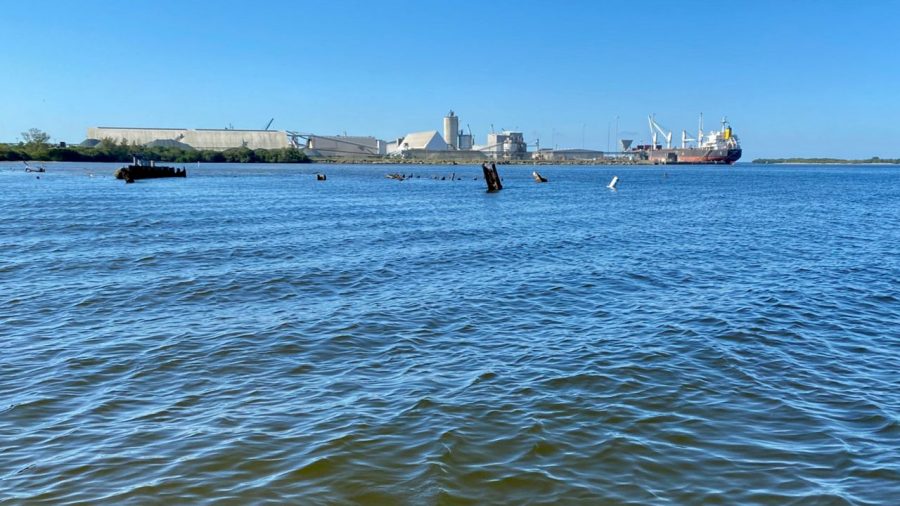Tampa Bay Crisis Is Call to Becoming More Environmentally Conscience
April 12, 2021
Florida Governor Ron DeSantis declared a state of emergency on Saturday, April 3 after the Florida Department of Environmental Protection detected a leak at the Piney Point facility, a phosphate plant located in Manatee County, Florida that holds about 480 million gallons of wastewater and is owned by the company HRK Holdings. This is the same compartment that leaked in 2011. Nikki Fried, the Florida agriculture commissioner, stated that this was an “environmental catastrophe” and urged DeSantis to hold an emergency meeting. “Floridians were evacuated from their homes on Easter weekend. 480m gallons of toxic wastewater could end up in Tampa Bay – this might become an environmental catastrophe,” she said on Twitter.
The pond sits in a stack of phosphogypsum, a radioactive waste product from fertilizer manufacturing. It contains small amounts of naturally occurring uranium and radium. The stacks can release high concentrations of radon gas. The Florida Department of Environmental Protection states that the wastewater is not radioactive and meets water quality standards except for its pH, total phosphorus, total nitrogen, and total ammonia nitrogen. It is described as
saltwater from a dredging project mixed with stormwater runoff and legacy process water. Environmentalists worry that the high levels of nutrients such as nitrogen and phosphorus will trigger the formation of toxic red algal blooms and red tides, which will harm the ecosystem, deplete oxygen levels, contribute to fish kills, deplete oxygen levels, and create a shade on the water that prevents the sunlight from reaching the bottom to grow sea grasses. These environmental consequences make it necessary to implement effective mitigation strategies.
After Governor DeSantis declared a state of emergency, the U.S. Environmental Protection Agency deployed an on-scene coordinator and an Army Corps of Engineers. Officials in Manatee County, Florida extended an evacuation zone overnight and warned that a failure to repair the breach at the Piney Point reservoir would result in a catastrophic flood. Emergency crews used pumps and vacuum trucks to drain a contaminated wastewater reservoir and prevent a full-fledged breach. Inmates were safely transported from the Manatee County Jail to the top floor of the facility, which was more than ten feet above base level.
While crews reduce the immediate hazards posed by the leakage, public officials plan to implement long-term solutions. According to Fried, the Piney Point facility has caused environmental issues for decades. “For more than fifty years, this Central Florida mining operation has caused numerous human health and environmental disasters and incidents, including evacuations from sulfuric acid leaks, deaths of multiple employees, the release of more than 1 billion gallons of contaminated wastewater, and ongoing, regular gypsum stack and reservoir leaks from poor construction and maintenance that released heavy metals and pollutants into the region’s water and soil,” Fried wrote. It is important to develop policies and programs that make the Piney Point facility more resilient to environmental disasters.
At this point, you may be wondering how this applies to you because we live in New Jersey, which is far away from the environmental crisis in Florida. We can prevent water pollution by reducing the use of chemicals when cleaning, properly disposing of medications, avoiding the use of herbicides and pesticides, avoiding plastic containers, picking up litter, using phosphate-free detergent and dish cleaner, eating more organic food, cleaning up beaches and rivers, and supporting environmental charities. If we all make these simple changes, we will contribute to the long-term goal of environmental sustainability, which will benefit environmental and human health.






























